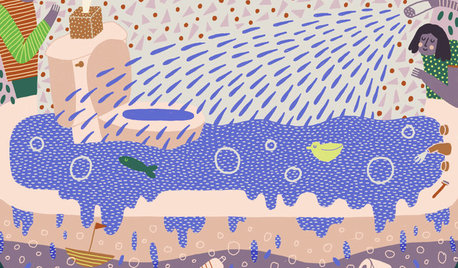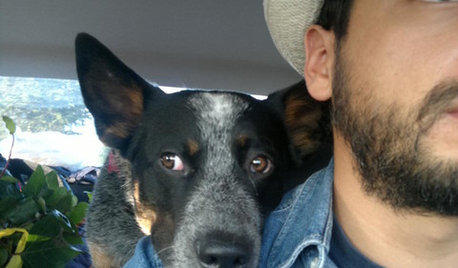My Miracle Guineas
audrey_gw
13 years ago
Related Stories

MOST POPULARMeet a Lawn Alternative That Works Wonders
Carex can replace turfgrass in any spot, is low maintenance and adjusts easily. Add its good looks and you’ve got a ground cover winner
Full Story
GARDENING GUIDESBright Plants for Flower Beds That Wow
From new annual and perennial varieties to grasses, get dramatic with swaths of color
Full Story
PETSDealing With Pet Messes: An Animal Lover's Story
Cat and dog hair, tracked-in mud, scratched floors ... see how one pet guardian learned to cope and to focus on the love
Full Story
FUN HOUZZTechnicolor Solutions to 3 Popular Home Peeves
Imagination runs wild in these illustrated solutions for Houzzers' home dilemmas
Full Story
GARDENING GUIDESHow to Switch to an Organic Landscape Plan
Ditch the chemicals for a naturally beautiful lawn and garden, using living fertilizers and other nontoxic treatments
Full Story
PETS50 Dog Photos Worth a Wag
Design hounds: Share in the pet love with Houzzers' snapshots of their beloved dogs at home, in the workshop and at play
Full Story
GARDENING GUIDESSuperstar Annuals for Containers and Baskets
High performing, low maintenance and all-around gorgeous, these container plants go the distance while you sit back and relax
Full Story





seramas
audrey_gwOriginal Author
Related Professionals
Canton Landscape Architects & Landscape Designers · Maple Valley Landscape Architects & Landscape Designers · Waunakee Landscape Architects & Landscape Designers · Huntington Landscape Contractors · Lynchburg Landscape Contractors · North Plainfield Landscape Contractors · Sun City Center Landscape Contractors · Waldorf Landscape Contractors · Carney Fence Contractors · Gilbert Fence Contractors · Centennial Decks, Patios & Outdoor Enclosures · Lacey Decks, Patios & Outdoor Enclosures · Portland Decks, Patios & Outdoor Enclosures · Rantoul Decks, Patios & Outdoor Enclosures · South Lyon Decks, Patios & Outdoor Enclosuresmersiepoo
seramas
audrey_gwOriginal Author
audrey_gwOriginal Author
seramas
audrey_gwOriginal Author